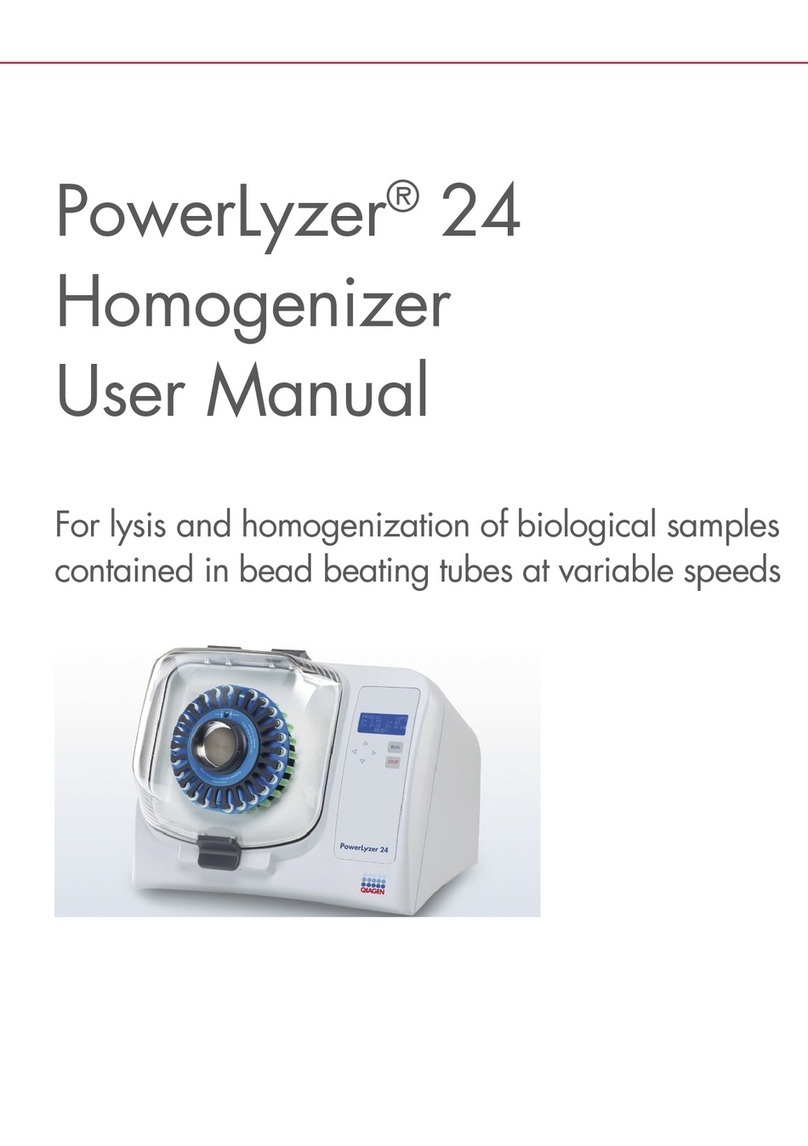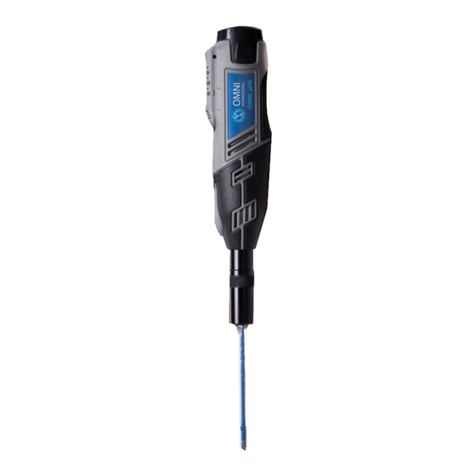
2
WARRANTY INFORMATION
This manual is a guide for the use of the Omni Mixer and Omni Macro
Homogenizers and accessories.
Data herein has been veried and validated. It is believed adequate for the
intended use of the instrument. If the instrument or procedures are used for
purposes over and above the capabilities specied herein, conrmation of the
validity and suitability should be obtained, otherwise Omni International does
not guarantee results and assumes no obligation or liability. This publication
is not a license to operate under, or a recommendation to infringe upon, any
process patents.
Notes, cautions, and warnings within the text of this manual are used to
emphasize important and critical instructions.
This Omni International product is warranted to be free from defects in
material and workmanship for a period of THREE YEARS from the date of
delivery. Omni International will repair or replace and return free of charge
any part which is returned to its factory within said period, transportation
prepaid by user, and which is found upon inspection to have been defective
in materials or workmanship. For the rst 90 days, both parts and service
are without charge. For the balance of the period, parts will be provided
but service will be charged at established labor rates. This warranty does
not include normal wear from use; it does not apply to any instrument or
parts which have been altered by anyone other than an employee of Omni
International nor to any instrument which has been damaged through
accident, negligence, failure to follow operating instructions, the use of
electric currents or circuits other than those specied on the plate axed
to the instrument, misuse, or abuse. Omni International reserves the right
to change, alter, modify, or improve any of its instruments without any
obligation whatsoever to make corresponding changes to any instrument
previously sold or shipped.
THE FORGOING OBLIGATION IS IN LIEU OF ALL OBLIGATIONS AND LIABILITIES
INCLUDING NEGLIGENCE AND ALL WARRANTIES OF MERCHANTABILITY OR OTH-
ERWISE, EXPRESSED OR IMPLIED IN FACT OR BY LAW, AND STATE OUR ENTIRE AND
EXCLUSIVE LIABILITY AND BUYERS EXCLUSIVE REMEDY FOR ANY CLAIM OF DAMAGES
IN CONNECTION WITH THE SALE OR FURNISHING OF GOODS OR PARTS, THEIR DESIGN,
SUITABILITY FOR USE, INSTALLATION, OR OPERATION. OMNI INTERNATIONAL WILL IN
NO EVENT BE LIABLE FOR ANY SPECIAL OR CONSEQUENTIAL DAMAGES WHATSOEVER,
AND THEIR LIABILITY UNDER NO CIRCUMSTANCES WILL EXCEED THE CONTRACT PRICE
FOR THE GOODS FOR WHICH LIABILITY IS CLAIMED.





























